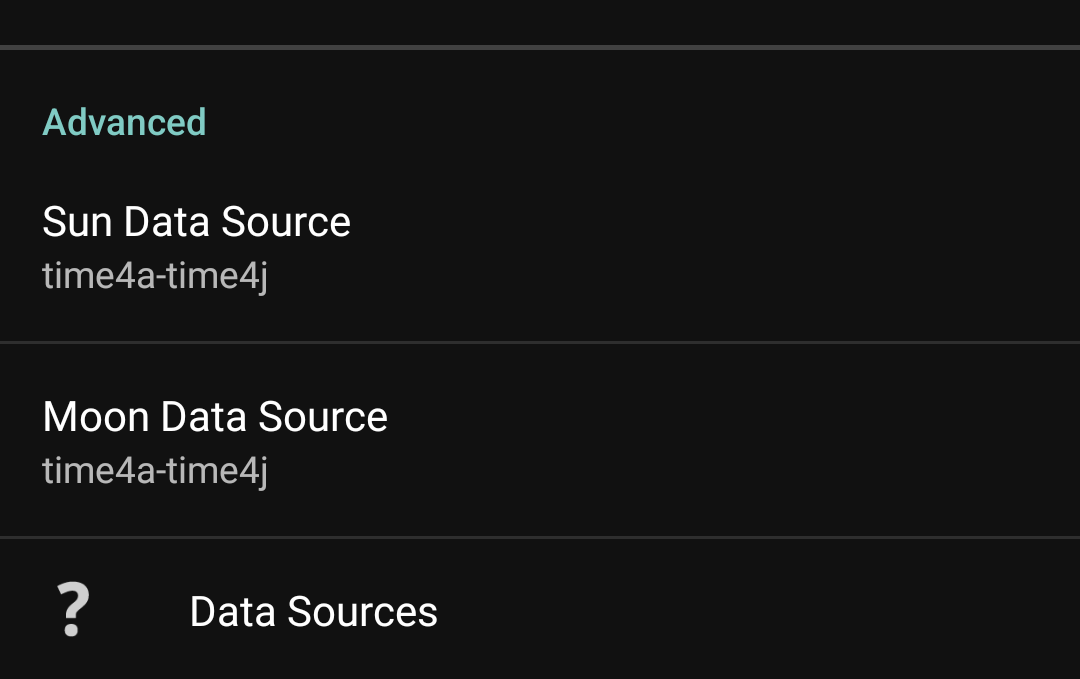Data Sources
Suntimes uses third-party libraries to perform astronomical calculations.
The data source settings allow for choosing between different libraries (or choosing between different algorithms offered by those libraries).
Suntimes -> Settings -> General -> Advanced
These are advanced settings that affect the speed and accuracy of calculations, and may limit which features are available.
